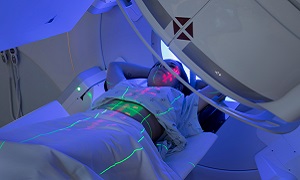Vaginal Cancer
Occurring in the vagina, vaginal cancer is a rare cancer. The vagina is a muscular tube connecting the uterus with the outer genitals. It mostly occurs in the cells lining the surface of the vagina called the birth canal. Primary vaginal cancer that begins from your vagina is rare. However, the other types of cancer spread from different parts of your body to the vagina. Vaginal cancer is difficult to treat if it spreads beyond the vagina.
Types of Vaginal Cancer
Depending upon the cell type of origin of cancer, the various types of vaginal cancer are:
- Vaginal squamous cell carcinoma – It is the most common vaginal cancer. It begins in the flat, thin cells called squamous cells. The squamous cells form a lining on the surface of the vagina.
- Vaginal melanoma – Melanocytes are the pigment-producing cells. This cancer occurs in these pigment-producing cells of the vagina.
- Vaginal adenocarcinoma – The glandular cells are present on the surface of the vagina. This cancer begins in these glandular cells.
- Vaginal sarcoma – This type of cancer develops either in the muscle cells or in connective tissue cells that present in the walls of the vagina.
Causes of Vaginal Cancer
Although doctors can’t figure out what exactly causes vaginal cancer, it begins when the healthy cells undergo DNA mutation. The normal cells turn into the abnormal cells because of this DNA mutation. The growth, multiplication, and death of the normal cells are at a set rate. However, growth & multiplication of cancer cells is beyond the control and these cells don’t die soon. The abnormal cells accumulate to form a tumor or mass. These cancer cells break off from the tumor or mass to invade the surrounding healthy tissues and spread to other parts of the body.
Symptoms of Vaginal Cancer
In the initial stages of vaginal cancer, the signs and symptoms are absent. However, they may develop and appear with the progression of cancer.
- Watery vaginal discharge
- Frequent urination
- Unusual vaginal bleeding
- Pain during urination
- Pelvic pain
- Mass or lump in the vagina
- Constipation
Diagnosis of Vaginal Cancer
Screening for vaginal cancer
Before the signs and symptoms develop, your doctor may find vaginal cancer during a routine pelvic examination. For this, your doctor may examine your outer genitals followed by insertion of two fingers into your vagina while simultaneously pressing your abdomen with the other hand to feel your ovaries and uterus.
Inspection of vagina
Doctors use a special lighted magnifying instrument called a colposcope to examine your vagina. You might need to undergo colonoscopy for the inspection of the vagina and to allow your doctor to magnify the surface of the vagina. The instrument reveals areas with abnormal cells.
Vaginal tissue testing
Your doctor will ask you to undergo a biopsy. For this, he or she will remove a part of the suspected tissue to test for the presence of the cancer cells. He or she may take the sample during a colposcopy examination. Your doctor will send the sample of the tissue to the lab for the testing snd to detect the presence of cancer cells.
Imaging tests
You may have to undergo imaging tests that determine the spread of cancer. The different imaging tests are computerized tomography (CT) scans, positron emission tomography (PET), X-rays, and magnetic resonance imaging (MRI).
Tiny cameras for inspection
There are some procedures in which your doctor uses tiny cameras to view the inside of your body. It helps your doctor in determining the spread of cancer in various parts of the body. These tiny cameras also help your doctor to see the inside of your rectum (proctoscopy) and your bladder (cryptoscopy).
Treatment options for vaginal cancer
The type of vaginal cancer that you have and the staging of cancer determine the most viable treatment option for you. On the basis of goals of the treatment and the side effects of any specific treatment, your doctor can decide the treatment for you by taking your consent. It comprises radiation and surgery.
Radiation Treatment
Radiation treatment kills the cancer cells but may also cause side effects by damaging nearby cells. The intensity of radiation determines the side effects of radiation. Your doctor will use high-powered energy beams to kill the cancer cells.
- External Radiation- The doctor will direct the radiation towards your pelvis or abdomen, depending upon the extent of the cancer spread. Mostly, doctors treat women with external beam radiation.
- Internal Radiation- In this, the doctor uses radioactive devices like wires or cylinders and place them in the vagina or the surrounding tissue. Most women with early-stage vaginal cancer undergo internal radiation treatment. However, some others may require external radiation followed by internal radiation.
Surgery
Removal of small tumors
Vaginectomy
Removal of a part of your vagina is vaginectomy while the removal of the entire vagina is a radical vaginectomy. These surgeries are necessary for the removal of cancer from your body. Your doctor may suggest removing your uterus and ovaries (hysterectomy) or removing the nearby lymph nodes (lymphadenectomy) along with vaginectomy, depending on the spread of cancer in your body.
Pelvic exenteration
Chemo
The treatment requires the use of chemicals to kill the cells responsible for the spread of cancer. Doctors combine chemo with radiation treatment for the effectiveness of the treatment. This is because it’s still not clear if chemo treats vaginal cancer.








